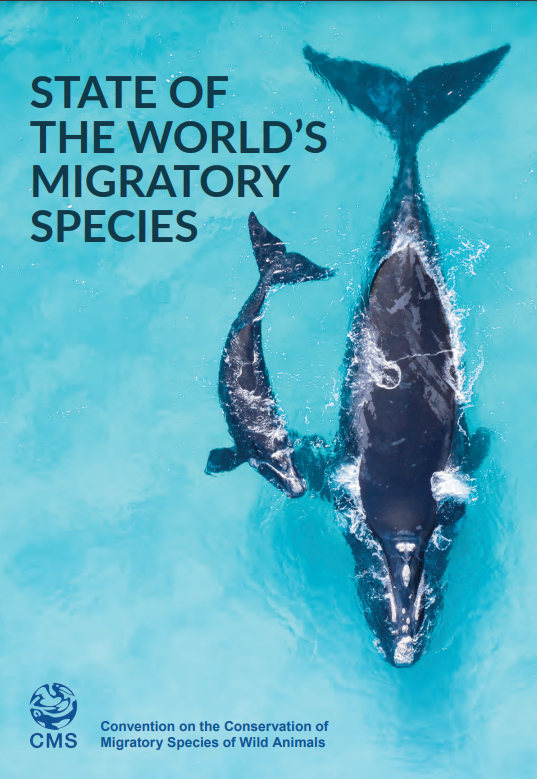📐 Methodology
CMS is an environmental treaty of the United Nations concerning the conservation and sustainable use of migratory animals and their habitats. They bring together States to dermine policy and provide guidance on specific issues through a number of instruments.
CMS has two Appendices that list the species to which the Convention applies, covering a wide variety of animal species. Appendix I encompasses migratory species which are endangered. Appendix II covers migratory species which have an unfavourable conservation status, and which require international agreements for their conservation and management.
Based on the CMS Appendices, a preliminary compilation and analysis of information on conservation status, population trends and threats for CMS species was presented at the COP13. However, this document did not attempt to draw conclusions, but identified aspects that could benefit from further work.
Thus, this report follows through on the COP13 mandate and, for the first time, provides information on the status and threats to CMS-listed species, as well as knowledge and implementation gaps.
🔎 Key Takeaways
Evidence suggests that the conservation status of many CMS-listed species is deteriorating, with one in five CMS species threatened with extinction and a substantial proportion undergoing population declines. The picture becomes even more bleak for migratory species not listed in CMS.
A significant driver of extinction and population decline is anthropogenic pressure. This includes habitat loss, including degradation and fragmentation, and exploitation as the main threats. Furthermore, the impacts of climate change are also felt by many migratory species, which will only increase and amplify other threats. By constraining the movement of migratory animals, anthropogenic impacts on vital migrator corridors and stopover sites pose a significant threat to migration. Research shows that 58% of monitored sites recognised to be important for CMS-listed species are facing unsustainable levels of anthropogenic pressure.
As a result, coordinated international action is needed to reverse population declines and preserve these species and their habitats. Fortunately, a wealth of knowledge exists on the responses and solutions that are required to help migratory populations recover. Additionally, collaborative actions are already underway under CMS, including international task forces addressing the illegal killing of birds or multi stakeholder platforms to support the sustainable deployment of renewable energy infrastructure without negatively impacting migratory species.
These efforts need to be strengthened and scaled up to curb losses and promote the recovery of migratory species. Some recommendations include:
- Actions to expand the global network of protected and conserved areas, particularly those areas of importance to migratory species, in line with global targets, which also working to improve the condition and effective management of sites;
- Maintaining and enhancing the connectivity between sites, in part through the targeted restoration of degraded habitats;
- Coordinated action to combat overexploitation, including the expansion of collaborative international initiatives to prevent the illegal or unsustainable taking of migratory species.
International Coalition “Biodiversity Corridors in Africa”
Climate Chance is working to strenghten ecological connectivity through its International Coalition “Corridors of Biodiversity in Africa. This coalition brings together climate and conservation actors, with a demonstrator project in Guinea.
Find out more here

